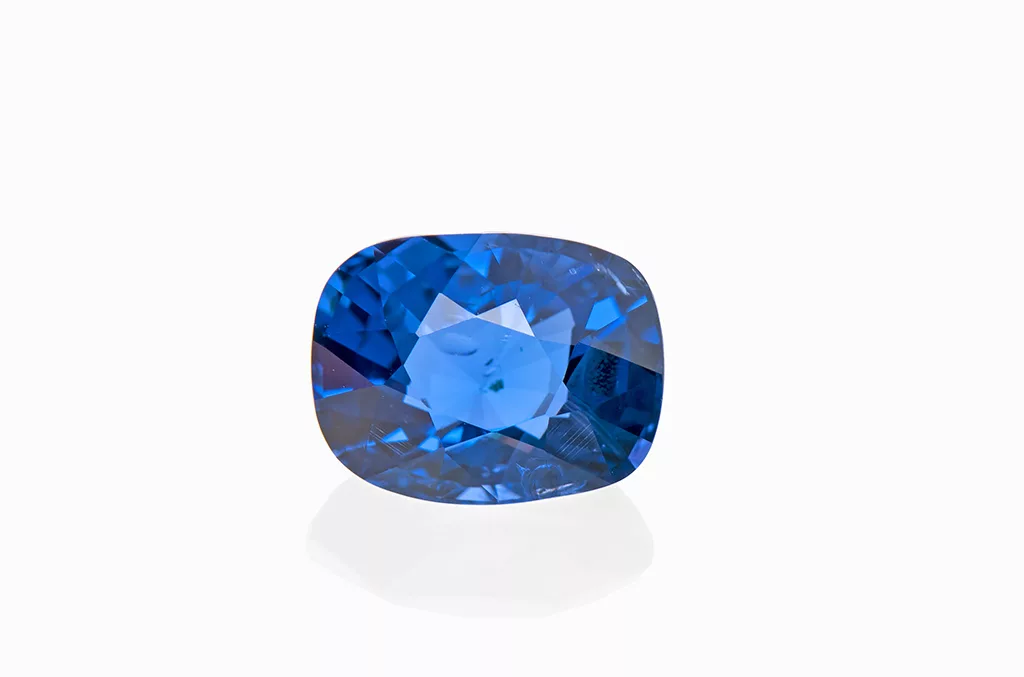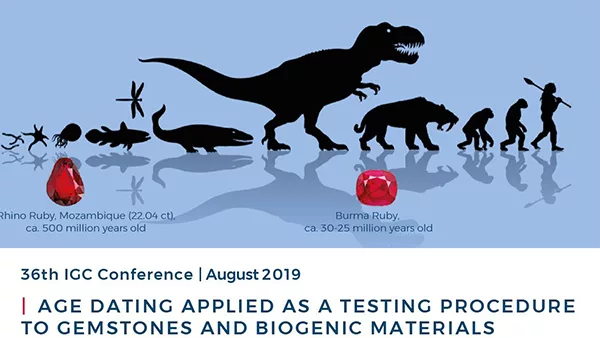
Age dating of cobalt spinel
by Dr. M.S. Krzemnicki, first published in Facette 27 (June 2021)

Radiometric U-Pb dating is a promising tool in gemstone testing and is used at SSEF as an advanced analytical procedure since several years. However, this method is usually only applicable when the gemstone presents sufficient traces of radiogenic elements either in its crystal structure or within a solid inclusion in the gemstone.
Examples for which such age dating was carried out at SSEF were already presented in the past few issues of the SSEF Facette (see for example: Age dating of sapphires and inclusions, see Facette 24, in 2018; Age dating of titanite inclusion in Mogok ruby, Facette 25 in 2019; Age dating of gems, Facette 26 in 2020). In most cases, U-Pb dating was presented for rubies and sapphires.
Last year, we received a cobalt spinel of an attractive blue colour for testing. Based on our gemmological testing, a Vietnamese origin was most likely, although gem-quality cobalt-blue spinels of similar colour are known from other deposits in Sri Lanka, East Africa, and Madagascar. Luckily enough, this spinel contained a small zircon inclusion at the surface near the girdle, on which we were able to carry out radiometric U-Pb dating.
Due to the small size of our GemTOF laser spot, we were able to do several analyses on the same zircon inclusion, revealing two different ages. The core of the zircon provided a calculated age of about 160-190 million years, whereas the outermost rim gave an age of about 46 million years. Such an age difference between core and rim regions is a common feature in zircon and is well documented in scientific literature. Zircon, being a small but very resistant accessory mineral grain in many rocks is often accumulated in sediments after the erosion of their primary rock. As such these old so-called detrital zircons, get re-involved in later geological events, such as the regional metamorphism event in the Paleogene and early Neogene during the collision of the Indian plate with the Eurasian continent which resulted in the formation of the Himalayan mountain range.
The cobalt spinels from Luc Yen in Northern Vietnam formed in marbles during this geologically rather young event. Occasionally, as in our case, they included a much older zircon grain hosted in the carbonate sediment. As a consequence of this rather young regional metamorphosis the zircon itself had grown a thin outer rim of a young age (46 million years) around its older core (120-160 million years), which we assume represents a previous geological event in the Jurassic period in Central Asia.
Based on our analyses, we can conclude that the investigated cobalt spinel formed at about 46 million years or some time later. A formation prior to the age of the rim of the zircon is impossible, as it would not be possible for the zircon to form a rim of such a young age if already included long before within the spinel. Consequently, this dating excludes all deposits related to the geologically much older Pan-African orogeny (about 600 million years ago), which formed cobalt spinels and many other gemstones in East Africa, Madagascar, and Sri Lanka. Our date fits well with Ar-Ar dates on phlogopite that formed syngenetically (at the same time) with marble-type ruby from Luc Yen (Garnier et al. 2006).
As it is our standard since 2020, radiometric dating is carried out on any gemstone whenever possible (it mostly depends on the presence of zircon inclusions at or very near to the surface). This service comes at no additional cost for our clients. In case such analyses are successful, we do indicate age dating in the comments section of our SSEF report and add a special letter, providing the interested reader the broader context of our dating results on the specific gemstone.
Based on the reactions from our clients, auction houses and the public, we see that this free additional service is considered highly fascinating, as it adds an intriguing scientific ‘facet’ to the beauty and brilliance of a gemstone.


